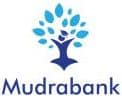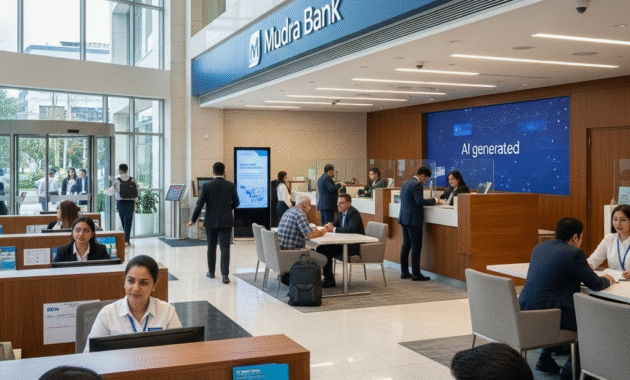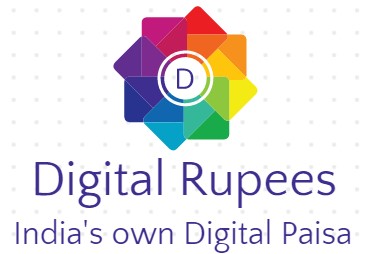What is Mudra Bank?

Page Contents
- 1 A Comprehensive Guide to MUDRA Loan: Empowering India’s Micro-Entrepreneurs
- 2 What is MUDRA Bank? A Catalyst for Micro-Entrepreneurship
- 3 The Three Pillars of Growth: Understanding MUDRA Loan Categories
- 4 Who is Eligible for a MUDRA Loan?
- 5 Navigating the Application Process: A Guide to Securing Your MUDRA Loan
- 6 MUDRA Loan Interest Rates: A Closer Look
- 7 The Collateral-Free Advantage: A Game-Changer
- 8 Addressing the Challenges and Future of MUDRA
- 9 Conclusion
- 10 Frequently Asked Questions
- 11 What is Mudra Bank?
- 12 Who can apply for a Mudra loan?
- 13 What is Mudra Loan eligibility?
- 14 What is the Age Limit for Mudra Loan?
- 15 What are mandatory documents for a mudra loan?
- 16 What is the mudra loan interest rate?
- 17 Which bank is providing mudra loans at the lowest interest rate?
- 18 What is the procedure for mudra loan registration?
- 19 Is Mudra Loan available for education?
- 20 Is subsidy available under the Mudra loan scheme?
- 21 What is mudra loan approval time/duration?
- 22 What is the mudra loan repayment schedule?
- 23 How can we open an account in Mudra Bank?
- 24 Who is MSME/ SME in India?
- 25 What is a Digital Mudra loan?
- 26 Is HDFC Bank is providing online mudra loans?
- 27 Will Mudra Bank issue Digital Rupees Online?
- 28
A Comprehensive Guide to MUDRA Loan: Empowering India’s Micro-Entrepreneurs
The landscape of Indian entrepreneurship is undergoing a massive transformation, fueled by the aspirations of millions of small-scale business owners, startups, and self-employed individuals. At the heart of this revolution is a landmark initiative by the Government of India: the Pradhan Mantri MUDRA Yojana (PMMY). This scheme, designed to “fund the unfunded,” has become a cornerstone of financial inclusion, providing much-needed credit to the micro-units that form the backbone of the nation’s economy.
Navigating the world of business finance can be challenging, but understanding the MUDRA scheme can unlock a golden opportunity to secure a collateral-free loan for your business. This comprehensive guide will delve into every aspect of the MUDRA loan, from its core purpose and eligibility to the application process, interest rates, and its profound impact on the nation. Whether you are a budding entrepreneur with a business idea or a seasoned small-scale trader looking to expand, this is your definitive resource for understanding and leveraging the power of MUDRA.
What is MUDRA Bank? A Catalyst for Micro-Entrepreneurship
The Micro Units Development and Refinance Agency (MUDRA) Bank is not a traditional lending institution that you would find on a street corner. Instead, it is a specialized financial institution and a wholly-owned subsidiary of the Small Industries Development Bank of India (SIDBI). Established in 2015, its primary mandate is to provide refinance support to other lending institutions, including public and Private Sector Banks, Regional Rural Banks (RRBs), Cooperative Banks, Non-Banking Financial Companies (NBFCs), and Microfinance Institutions (MFIs). This unique structure allows MUDRA to act as a policy and refinancing agency, creating an ecosystem where formal credit can reach the smallest of enterprises, particularly those in the unorganized sector.
Before the inception of MUDRA, micro-businesses often struggled to secure formal credit, forcing them to rely on informal, high-interest loans from moneylenders. MUDRA was born out of a vision to break this cycle, providing a structured, affordable, and accessible financial channel to uplift these micro-units. By refinancing partner institutions, MUDRA ensures that these banks and MFIs have the necessary capital to disburse collateral-free loans to millions of aspiring entrepreneurs, thereby encouraging new business formation and economic activity at the grassroots level. This strategic approach is a key reason why the scheme has had such a far-reaching impact across the country.
The Three Pillars of Growth: Understanding MUDRA Loan Categories
To cater to the diverse needs of India’s micro-enterprises at different stages of their lifecycle, the Pradhan Mantri MUDRA Yojana (PMMY) has been thoughtfully designed with three distinct loan categories. These categories—Shishu, Kishor, and Tarun—are not just financial brackets; they signify the stage of growth and funding requirements of the business, providing a clear roadmap for entrepreneurs.
1. Shishu (शिशु) Loan: This category, which translates to “infant” in Hindi, is designed for businesses that are just starting or require a very small amount of capital to get off the ground.
Loan Amount: Up to ₹50,000.
Purpose: Ideal for a wide range of activities, including setting up a new business, purchasing small equipment, buying stock for a street-side stall, or securing working capital for a home-based enterprise.
Why it Matters: The Shishu loan is a game-changer for first-time entrepreneurs. It removes the initial financial barrier, allowing individuals with innovative ideas but limited resources to turn their dreams into reality. The online application process, particularly for e-Mudra loans, has made it even more accessible, allowing applicants to secure funding quickly and efficiently.
2. Kishor (किशोर) Loan: Translating to “adolescent,” the Kishor loan is for businesses that are already established but require a larger infusion of funds to scale their operations.
Loan Amount: Ranging from ₹50,001 to ₹5 lakhs.
Purpose: This loan can be used for significant business expansion, such as purchasing new machinery, upgrading technology, buying a larger inventory, or investing in a new product line.
Why it Matters: For businesses that have outgrown the initial startup phase, the Kishor loan provides the crucial capital needed to grow and compete in the market. It allows entrepreneurs to professionalize their operations and move from a micro-enterprise to a small-scale business.
3. Tarun (तरुण) Loan: Meaning “young adult,” the Tarun loan is aimed at established businesses with proven track records that need a substantial loan for major expansion or diversification.
Loan Amount: Ranging from ₹5 lakhs to ₹10 lakhs.
Purpose: This loan is for serious business growth, such as setting up a new factory unit, expanding into new geographical markets, or undertaking a large-scale project.
Why it Matters: The Tarun loan provides the financial muscle for businesses to make a significant leap forward. It supports the transition from a small enterprise to a well-established and more profitable business, contributing to job creation and economic development on a larger scale.
The government’s recent decision to double the online e-Mudra loan amount for Shishu category loans from ₹50,000 to ₹1,00,000 is a testament to the scheme’s adaptability and commitment to empowering a new generation of entrepreneurs.
Who is Eligible for a MUDRA Loan?
The MUDRA scheme is designed to be as inclusive as possible, extending its benefits to a wide range of individuals and businesses. The eligibility criteria are broad to ensure that the “unfunded” and “underfunded” segments of society can access formal credit.
General Eligibility:
Any Indian Citizen: The scheme is open to any Indian citizen who has a business plan for an income-generating activity.
Business Sector: The business must be in the non-farm sector. This includes enterprises engaged in manufacturing, processing, trading, and services. The scheme has also been expanded to include allied agricultural activities, such as beekeeping, poultry, pisciculture (fish farming), and dairy farming, to support livelihood in rural areas.
Loan Requirement: The credit requirement of the business should be under ₹10 lakhs. This clearly defines the target audience as micro and small-scale entrepreneurs.
No Prior Defaults: The applicant must not be a defaulter with any bank or financial institution and should have a satisfactory credit track record.
The government has earmarked a significant corpus of funds—₹1 Lakh crore—to be disbursed under the MUDRA scheme. This fund is strategically allocated to each category to ensure a balanced and equitable distribution of financial support. For instance, ₹40,000 Crore has been allocated to the Shishu category, underscoring the government’s focus on nurturing new businesses from the ground up.
Securing a MUDRA loan is a straightforward process, thanks to the government’s efforts to simplify the application and disbursement process. While the exact steps and required documents may vary slightly from one bank to another, the general procedure remains consistent.
Step-by-Step Application Process:
Identify Your Loan Category: Based on your business needs and the required loan amount, determine whether you fall under the Shishu, Kishor, or Tarun category. This is the most crucial first step.
Choose a Lending Institution: MUDRA loans are disbursed by a wide network of public and private sector banks, RRBs, SFBs, MFIs, and NBFCs. You can approach any of these institutions where you have an existing relationship or one that is convenient for you.
Gather the Necessary Documents: While MUDRA loans are collateral-free, you still need to provide essential business and personal documents to the lending institution. These typically include:
Application Form: A duly filled MUDRA loan application form.
Identity and Address Proof: Aadhaar card, PAN card, Voter ID, Passport, or other government-issued IDs.
Business Proof: This can include business registration certificates, business licenses, or any other proof of business ownership and activity.
Financial Documents: For Kishor and Tarun loans, banks may ask for business financial statements, such as profit and loss statements and balance sheets.
Business Plan/Project Report: A detailed report outlining your business idea, financial projections, and how the loan will be used.
Submit the Application: You can submit your application either physically at a bank branch or, in some cases, online through the bank’s portal or the central Jan Samarth portal. The e-Mudra facility, especially for Shishu loans, has made the process almost instantaneous.
Bank Verification and Sanction: The bank will review your application and documents. They may conduct a site visit or a basic verification of your business. Upon satisfaction, they will sanction the loan, and the amount will be disbursed to your account.
MUDRA Loan Interest Rates: A Closer Look
One of the most common questions from applicants revolves around the interest rate of a MUDRA loan. It is important to note that there is no fixed or uniform interest rate for MUDRA loans. MUDRA, as a refinancing agency, provides the loan at a base rate to the lending institutions. These institutions then set their own interest rates for the final borrower.
Factors Influencing the Interest Rate:
Lending Institution: Each bank or MFI has its own lending policy and interest rate structure, which can vary.
Risk and Customer Profile: The interest rate can be higher or lower depending on the applicant’s credit score, repayment history, and the overall risk profile of the business.
Government Instructions: While there is no fixed rate, the government has urged banks to keep the rates low and affordable. This has led to some banks reducing their rates significantly to attract borrowers.
A crucial point to remember is that there is no subsidy on the interest rate under the PMMY Mudra loan scheme. This is a common misconception. The benefit lies in the low interest rates offered by lending institutions and the collateral-free nature of the loan.
The Collateral-Free Advantage: A Game-Changer
Perhaps the most revolutionary aspect of the MUDRA scheme is its collateral-free nature. For millions of small-scale entrepreneurs, the lack of collateral, such as property or assets, has been the biggest obstacle to accessing formal credit. MUDRA eliminates this barrier completely.
The loans under MUDRA are covered by the Credit Guarantee Fund for Micro Units (CGFMU), which provides a guarantee to the lending institutions. This guarantee mitigates the risk for banks, allowing them to confidently disburse unsecured loans without the need for any collateral or third-party guarantor. This feature is the single most important factor that has empowered the “unfunded” segment of the population, providing them with the opportunity to start or grow their business without risking their personal assets.
Addressing the Challenges and Future of MUDRA
Despite its widespread success, the MUDRA scheme has faced some challenges. We have received complaints from users that some banks show a negative approach towards disbursing these loans. This is often because banks perceive them as unsecured and potentially prone to becoming Non-Performing Assets (NPAs) on a large scale. The government is actively monitoring this issue, penalizing non-compliant banks and ensuring that the spirit of the scheme is upheld. The government’s Financial Inclusion team is keeping a close watch on the entire process to make sure that people get their loans without unnecessary hurdles.
Looking ahead, the future of MUDRA is bright. The government is planning to increase the maximum loan limit from ₹10 lakhs to a potential ₹50 lakhs, which would further boost the MSME sector. This expansion would provide more significant funding for larger-scale projects and help the next generation of entrepreneurs grow even more. With the continuous monitoring and strategic policy updates, the MUDRA scheme is poised to change the entire banking scenario in India, making it more accessible and equitable for everyone.
Conclusion
The Pradhan Mantri MUDRA Yojana is more than just a loan scheme; it is a powerful tool for economic empowerment and a symbol of India’s commitment to inclusive growth. It has successfully brought millions of micro-entrepreneurs into the formal financial system, providing them with the capital to start a business, create jobs, and contribute to the national economy. With its collateral-free loans, low interest rates, and a well-defined structure of support, MUDRA has transformed the lives of countless individuals and is helping to build a more self-reliant and prosperous India.
Thanks to Janpaksh
Frequently Asked Questions
What is Mudra Bank?
Who can apply for a Mudra loan?
What is Mudra Loan eligibility?
What is the Age Limit for Mudra Loan?
What are mandatory documents for a mudra loan?
Identity proof like Pan Card, Aadhaar Card, Voter I Card, Manrega Card.
Residence proof-like Aadhaar Card, Voter I Card
Application form of concern bank.
Passport size photos and
The project report will increase your chances to get a loan.
What is the mudra loan interest rate?
Which bank is providing mudra loans at the lowest interest rate?
What is the procedure for mudra loan registration?
Is Mudra Loan available for education?
Is subsidy available under the Mudra loan scheme?
What is mudra loan approval time/duration?
What is the mudra loan repayment schedule?
Term Loan:- To be repaid in suitable installments with a suitable moratorium period as per the cash flow of the business.
CC Limit:– Repayable on demand. Renewal and Annual Review as per internal guidelines of the Bank
How can we open an account in Mudra Bank?
Who is MSME/ SME in India?
What is a Digital Mudra loan?
Digital Mudra loan is an online mudra loan of the Bank of Baroda. With the help of BOB Digital Mudra Loan, You can apply for a mudra loan online. For more details please click here.
Is HDFC Bank is providing online mudra loans?
Yes, Like other Banks, HDFC Bank is also providing mudra loans online and offline. For an online mudra loan please click here for more details.
Will Mudra Bank issue Digital Rupees Online?
CBDC will issue the Digital Rupees Online. Mudra Bank will be a separate entity. About Digital Rupees, you can click above.





